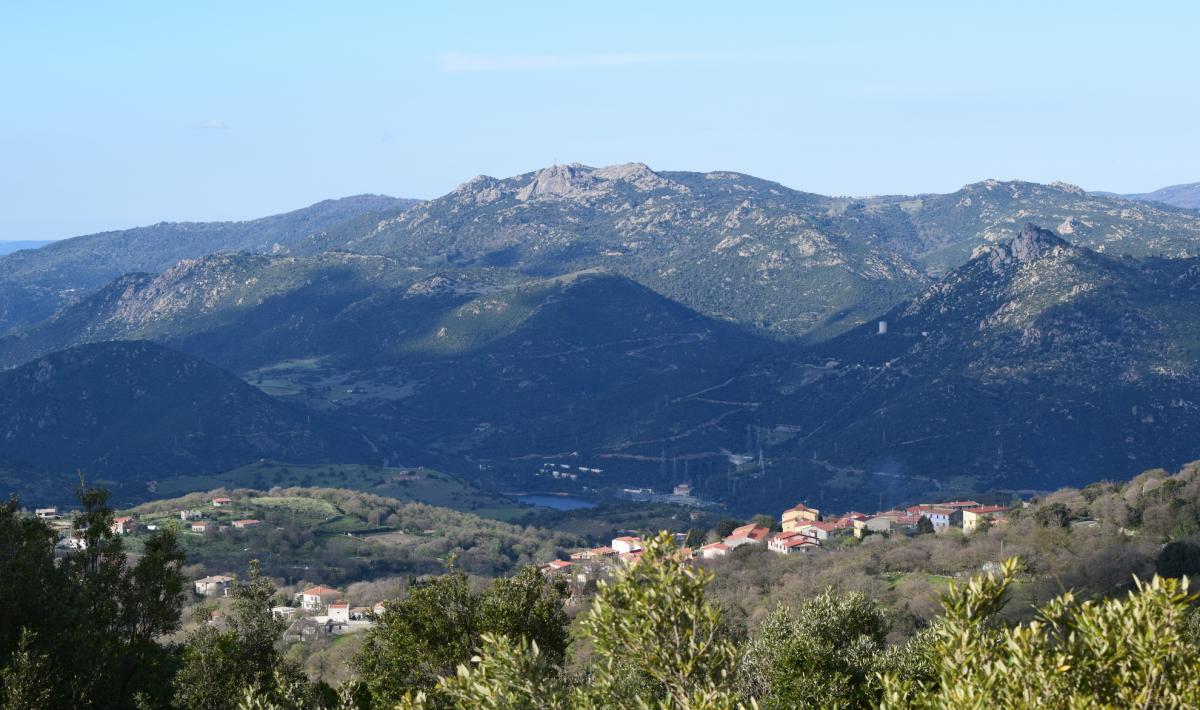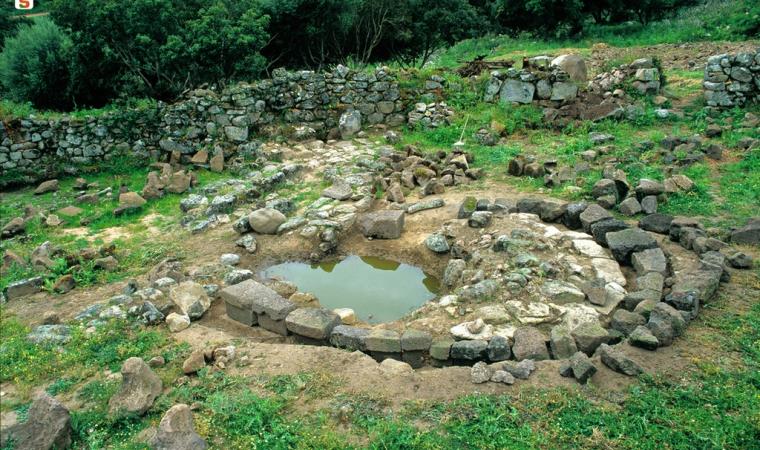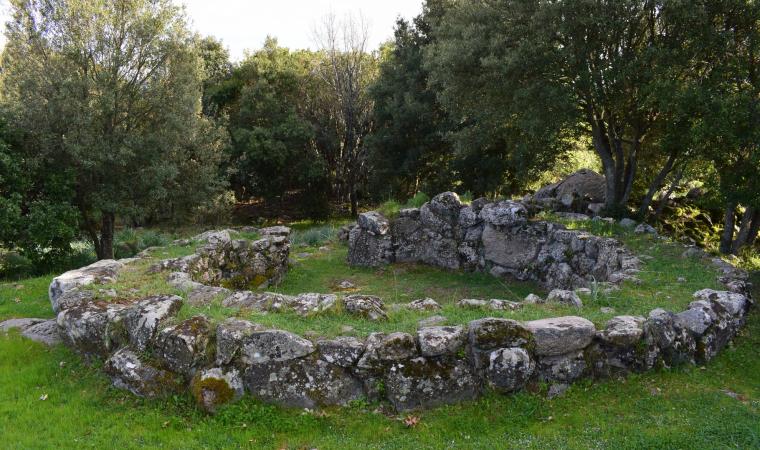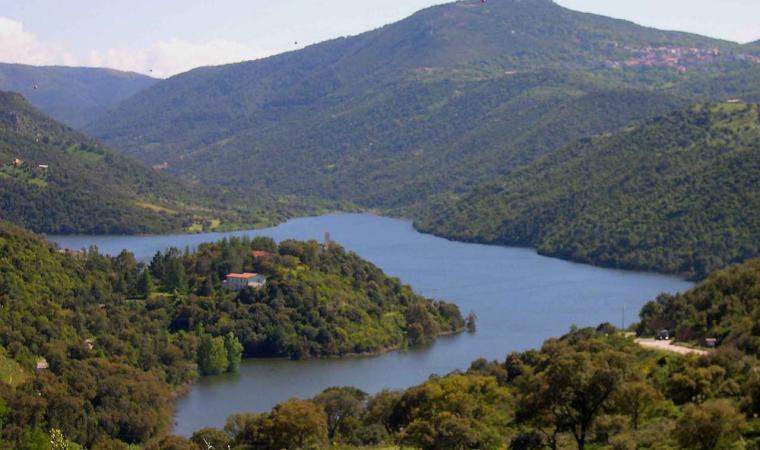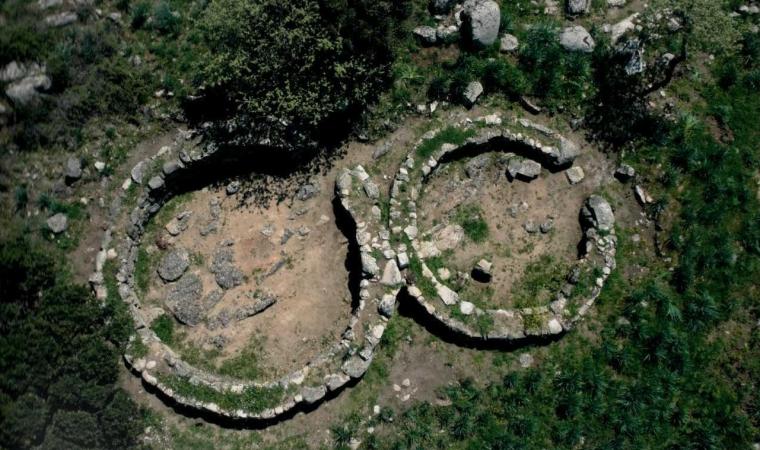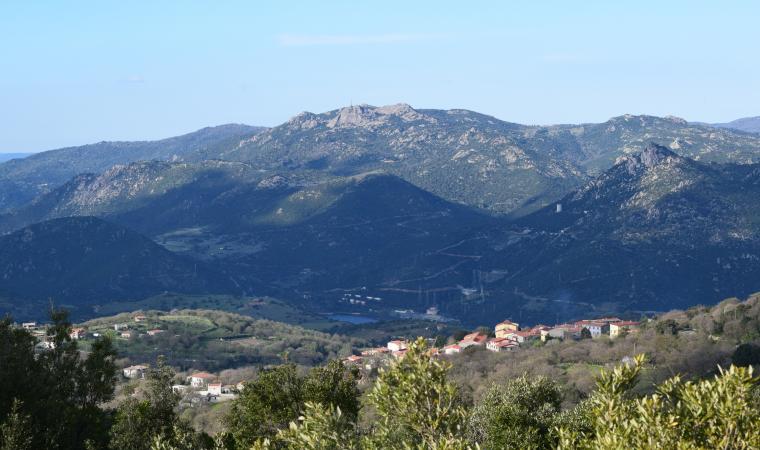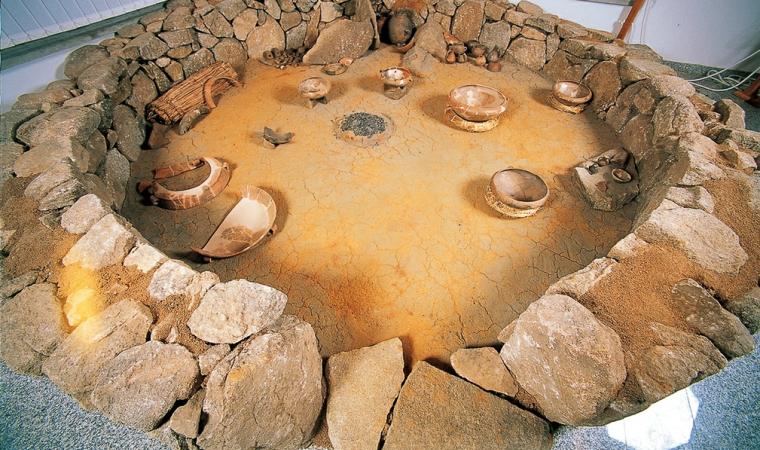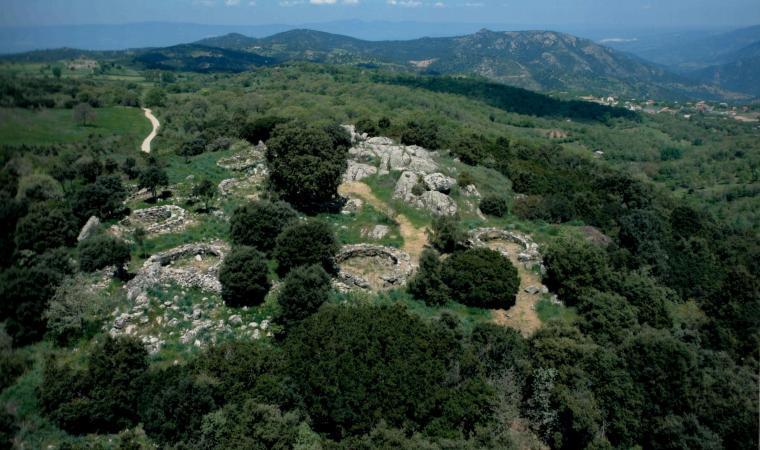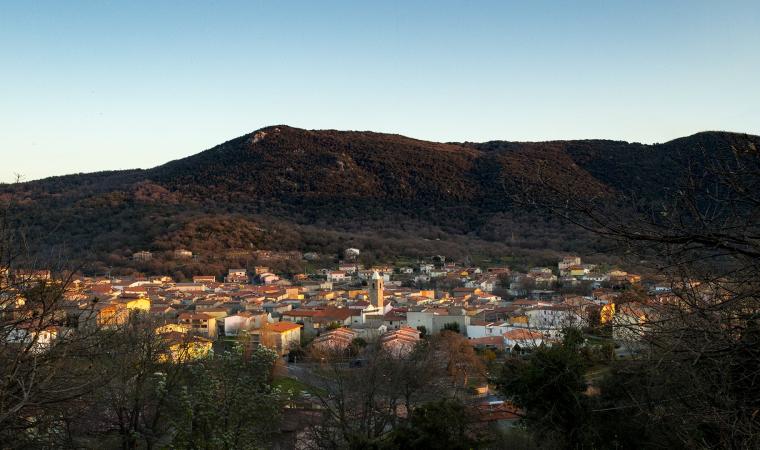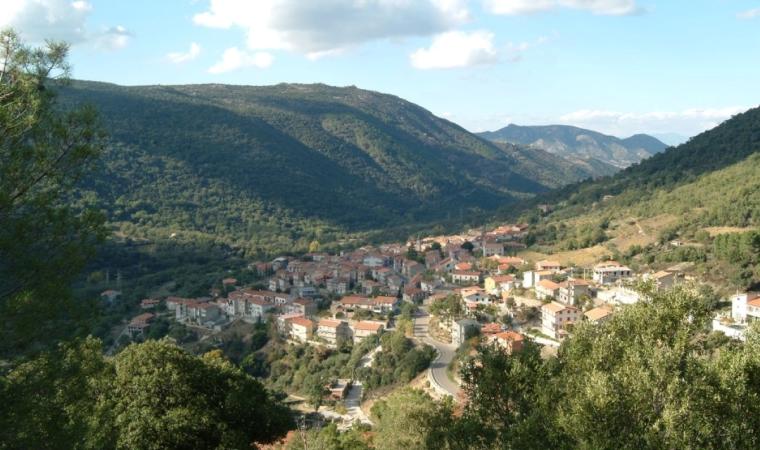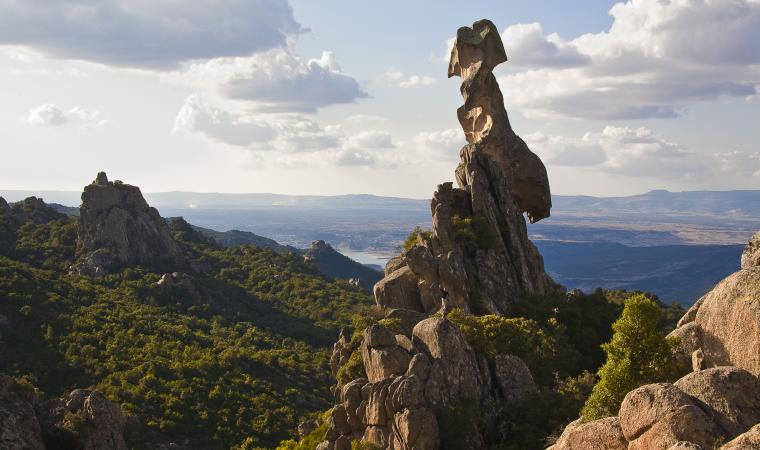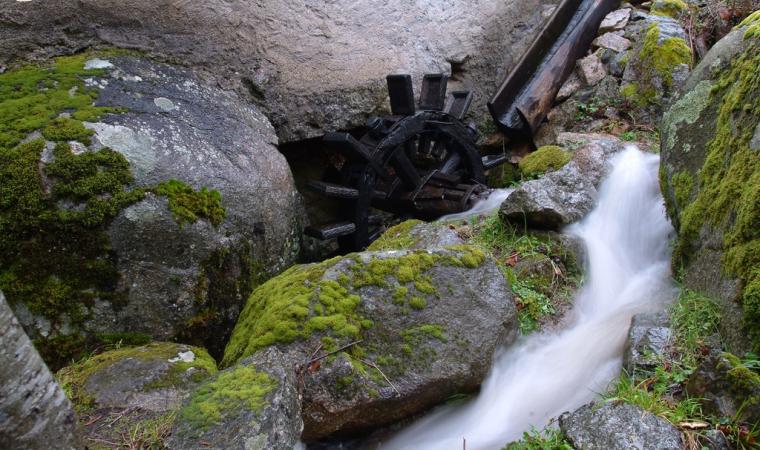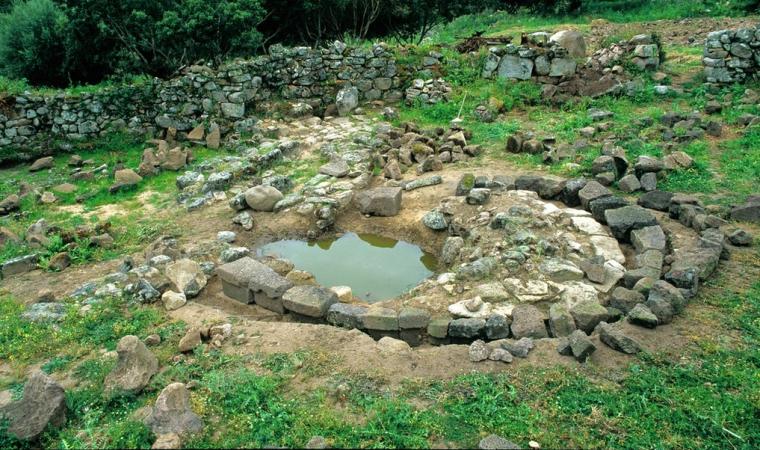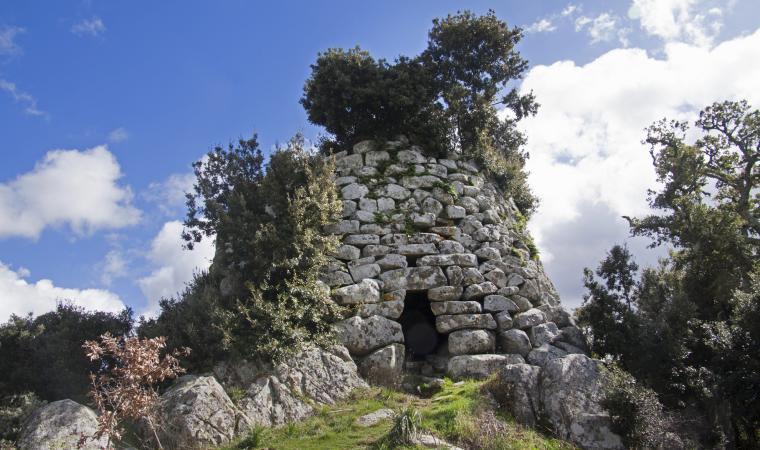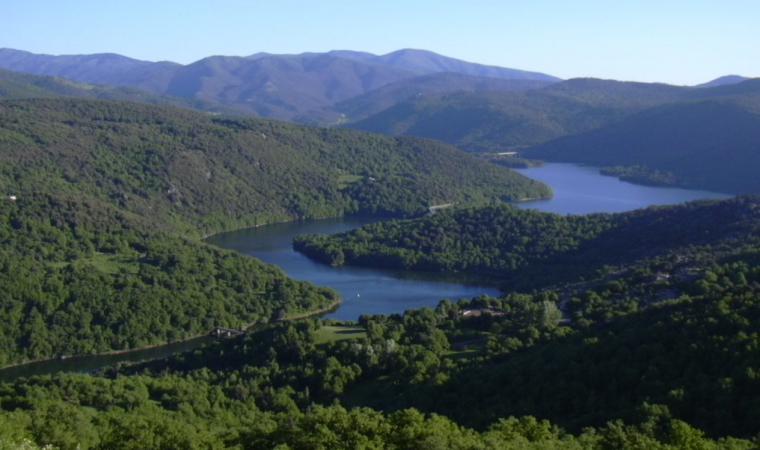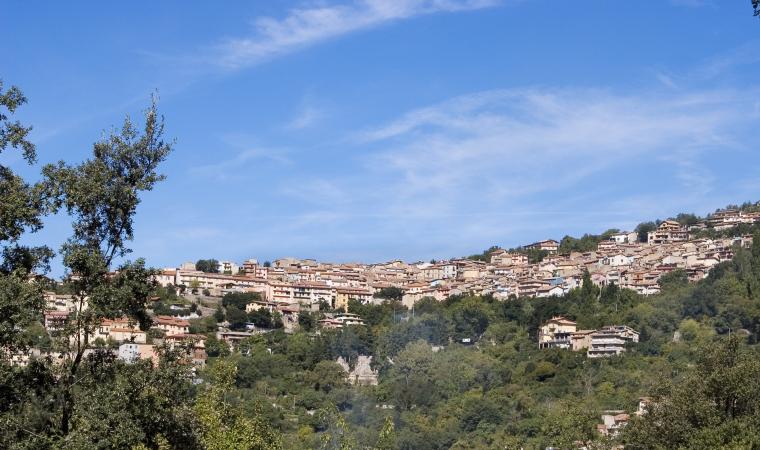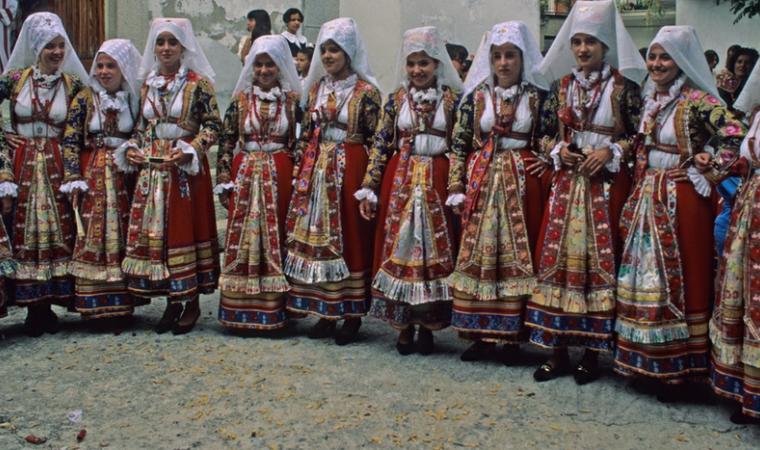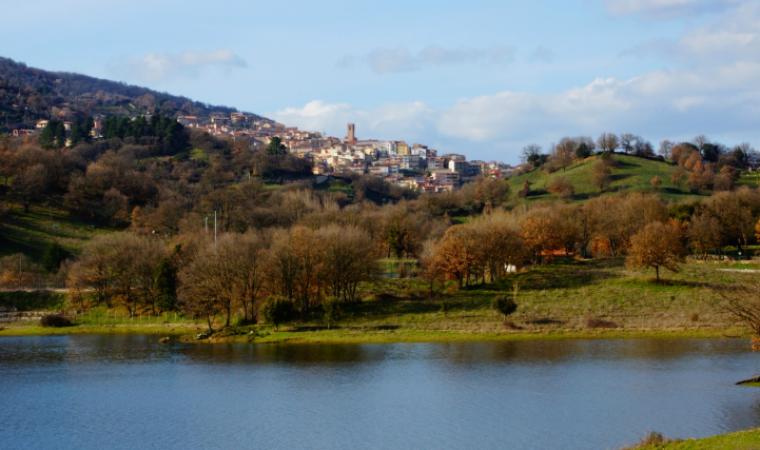Teti, a delightful mountain village situated at an altitude of 700 metres on the northwestern slopes of the Gennargentu massif. It was suddenly in the news in the middle of the 19th century because of the discovery of the village-sanctuary of Abini, a 'federal' place of worship and a pilgrimage destination for the Nuragic populations, of which part of the village and the sacred well still remain. Numerous bronze votive statuettes were found and are now on display at the National Archaeological Museum of Cagliari. At the excavations of the tomb of Giants of Atzadalai, the most ancient Sardinian work of art (4000 BC), namely the 'Sleeping Venus', was found, along with artefacts from the Middle and Final Neolithic periods, among which 'primitive' anthropomorphic menhirs. This small village in the Mandrolisai region has other valuable monuments from the Bronze Age: the nuraghi Alinedu and Turria, the settlements of Su Carratzu and Su Ballu and above all the complex of S'Urbale (with village, nuraghe and tomb of Giants): 50 circular huts with stone floors and a central hearth, tell the story, through the artefacts found, of daily life and activities in the 10th century BC.

